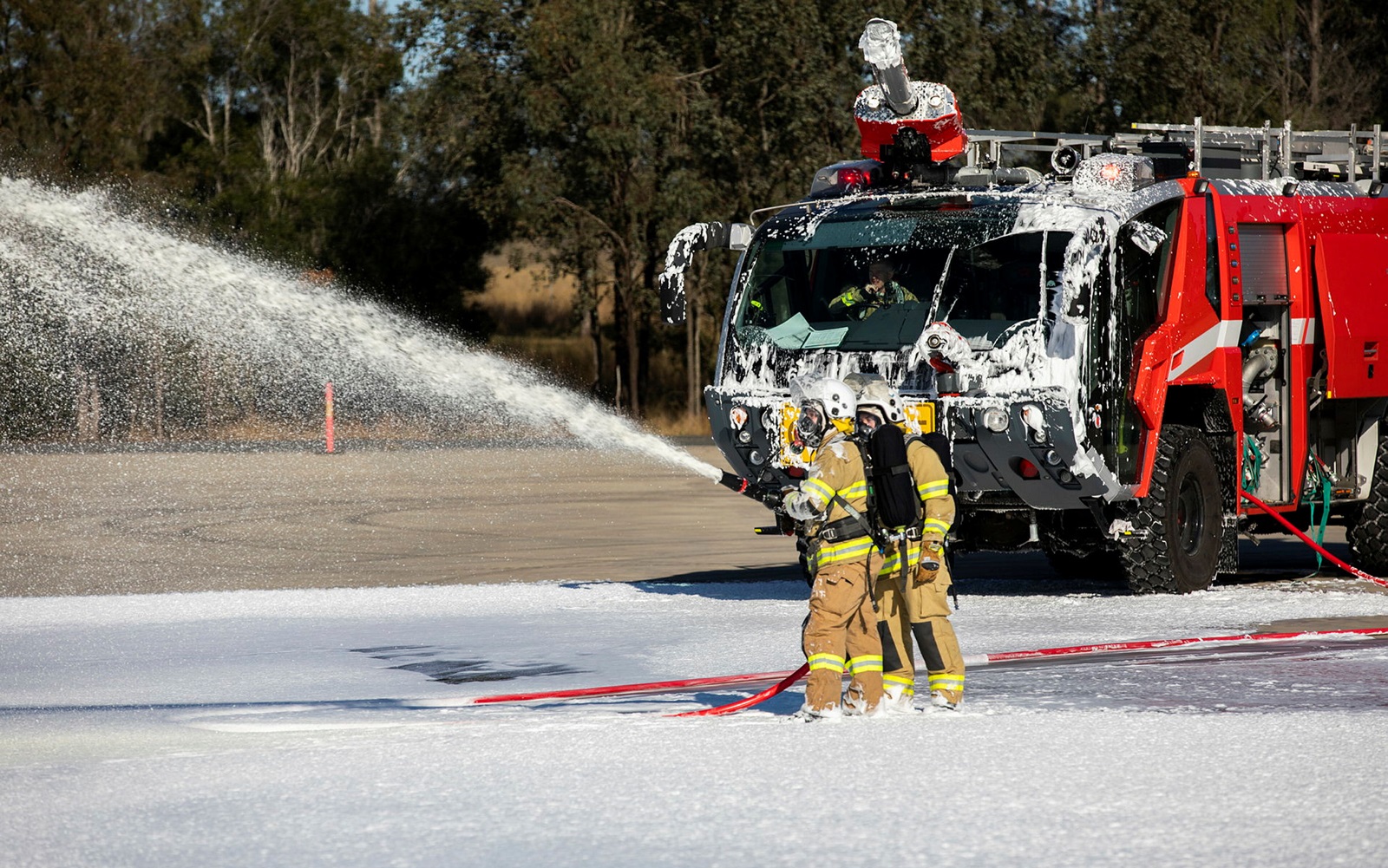
RAAF firefighters conduct aircraft crash response training. Photo: ADF.
A project underway at Charles Darwin University is seeking to reduce the reliance on harmful Per- and polyfluoroalkyl substances (PFAS) for firefighting.
The global effort to reduce reliance on PFAS has been slow due to the efficacy of alternative fluorine-free firefighting foams (F3). However, CDU is conducting research to increase this efficacy, which it hopes will boost their uptake.
The project – known as Fuel Pick-up and Its Emulsification as Means to Improve Fire Performance of Fluorine-free Firefighting Foams – is scheduled to run until 2027.
It is led by CDU’s Distinguished Research Professor Bogdan Dlugogorski and CDU senior lecturer in chemistry Dr Vinuthaa Murthy, supported by the US Department of Defense (DoD). It aims to develop new additives and formulations to make F3 as effective as PFAS-based foams.
The US DoD was required to phase out PFAS-based foams from 2024 because of the effect of PFAS on the environment. Known as ‘’forever chemicals’’, PFAS are a large and complex group of synthetic chemicals that have been used in consumer products since about the 1950s.
PFAS are used in products designed to keep food from sticking to packaging or cookware, make clothes and carpets resistant to stains, and create effective firefighting foam.
But PFAS molecules have a chain of linked carbon and fluorine atoms and, because the carbon-fluorine bond is one of the strongest, these chemicals do not degrade easily in the environment.
Exposure to PFAS has been linked to adverse health and environmental effects, including fertility issues and pregnancy-induced hypertension and preeclampsia, higher cholesterol and changes in the immune system.
Groundwater around military and commercial airports is the subject of some of the most high-profile cases of PFAS’ environmental damage, as airport firefighting services use them in training scenarios designed to simulate aircraft crashes.
Professor Dlugogorski said that, due to regulatory pressures to eliminate PFAS, fluorine-free firefighting foams were being developed as environmentally safer alternatives.
“However, current F3 foams do not match the performance of AFFF in critical fire-suppression scenarios,” he said.
“The need to improve fluorine-free firefighting foams arises from a combination of regulatory, environmental, and performance factors.
“Each firefighting foam used forcefully against fires of liquid fuels picks up some fuel. The process is called fuel pick-up.
“The more fuel that is picked up and mixed with the foam means it is less likely to ignite.”
Professor Dlugogorski said PFAS-based foams could pick up 50 to 90 per cent of fuel, while fluorine-free foams picked up between 20 and 50 per cent.
“PFAS-based foams make mixtures with fuel to be non-flammable, unlike F3,” he said. “The present fluorine-free firefighting foams don’t adequately stabilise the fuel during firefighting.”
The project will see researchers work to better understand the physics and chemistry of F3 and from there, look to develop new additives and formulations to improve them.
Professor Dlugogorski said if new technology were developed, it could have widespread applications like PFAS, which is used in cleaning products, water-resistant fabrics, nonstick cookware, cosmetic devices, food packaging and more.
“If the project develops new technology, this technology could be transferable everywhere – where emulsion/foam-type materials are used and need to be stabilised, from ice cream to mayonnaise to emulsion explosives,” he said.
Both researchers bring complementary skills and knowledge to the project, with Professor Dlugogorski’s expertise in firefighting and formulation of F3 and Dr Murthy’s in molecular modelling.
“This allows us to approach the problem of fuel pick-up from molecular perspectives, improving our chances to succeed,” Professor Dlugogorski said.


